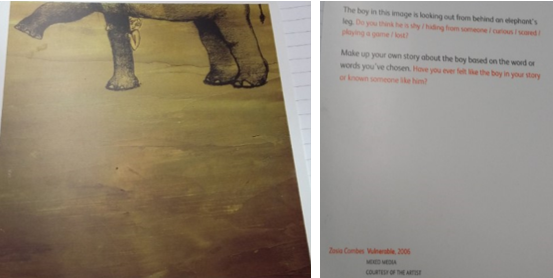“The human voice possesses the capacity to evoke powerful moods and messages, and is the primary tool for projecting the individual children in their broader surroundings” (Bloomsfield and Childs, 2000, p.76). The importance of the voice was emphasised within this session using an introductory video that comprised of beat boxing:
Figure 15: Beatbox video
This video could provide a useful stimulus for children as it “encourages enthusiastic engagement and to empower children to respond with feeling” (Callaway and Kear, 2000b, p.62). It was also interesting as it is a different art form that is not explored widely within primary schools and therefore may excite, engage and interest children more.
Furthermore, experiencing vocal warmups and realising the importance of taking care of your voice was a valuable experience. Using the voice is also a great form of music as it is “immediately accessible to children” (Bloomsfield and Childs, 2000, p.76). Therefore, as a future music educator, it is essential that I inspire children to embrace and give as much value to the voice as musical instruments.
In this session, we analysed an obscured image with prompt questions (shown below) as well as Rod Taylor’s model comprising of: process, form, content and mood to help us evaluate the image. This was a meaningful experience as Eisner (2002) identifies as a lesson the arts teach as “…students think through and within a material. All art forms employ some means through which images become real.”
My response to the image is shown below:
This would be a useful activity to replicate with children to develop an appreciation for art and to deepen their understanding and thinking behind a picture. Often, subtle details within paintings are not seen at first, and it is our role as teachers to make the implicit, explicit, and to evoke a feeling or response in children towards art. “When children are invited to disclose what a work of art helps them feel, they must reach into their poetic capacities to find the words that will do the job” (Eisner, 2002).
References
Bloomfield, A and Childs, J (2000) Teaching Integrated Arts in the Primary School: Dance, Drama, Music and the Visual Arts [Print] Great Britain: David Fulton
Callaway, G and Kear, M (eds) (2000b) Improving Teaching and Learning in the Arts [Print] London: Falmer Press
Eisner, E (2002) The Arts and the Creation of Mind, In Chapter 4, What The Arts Teach. [Print] London: Yale University Press.


